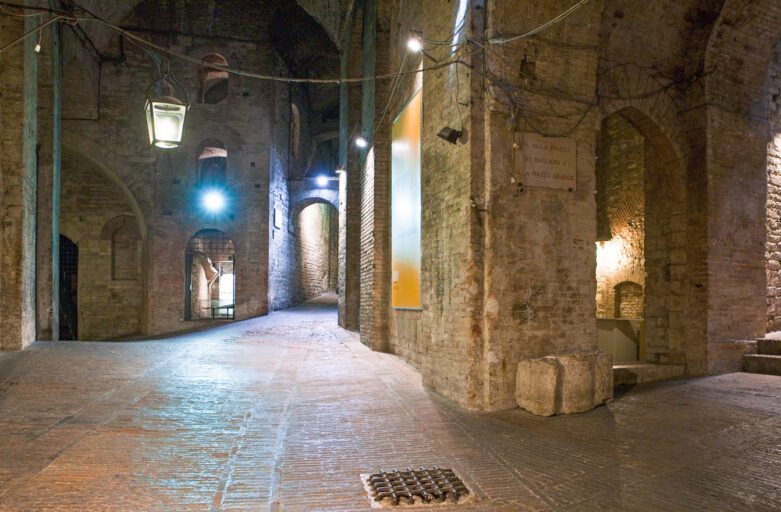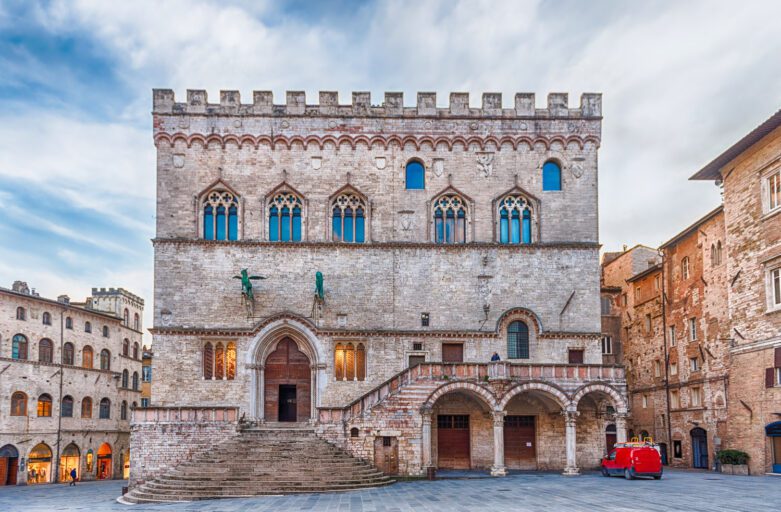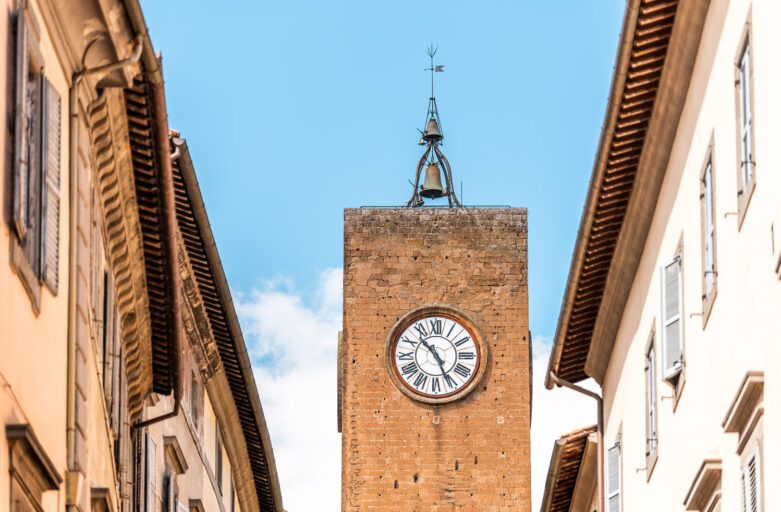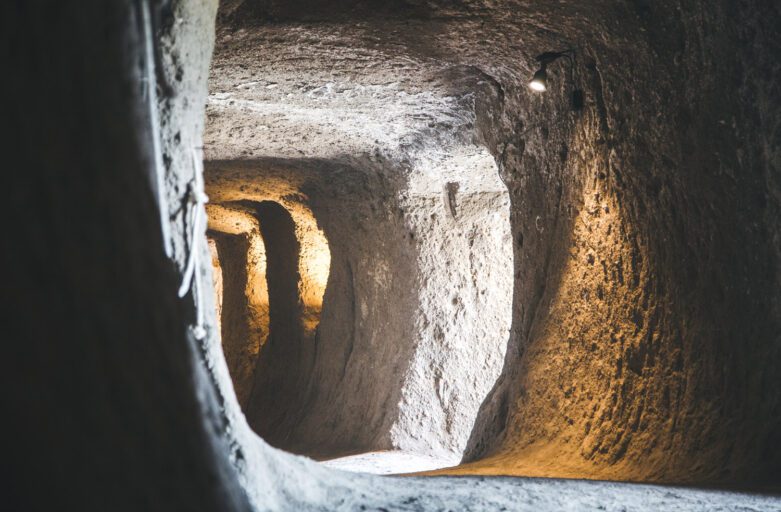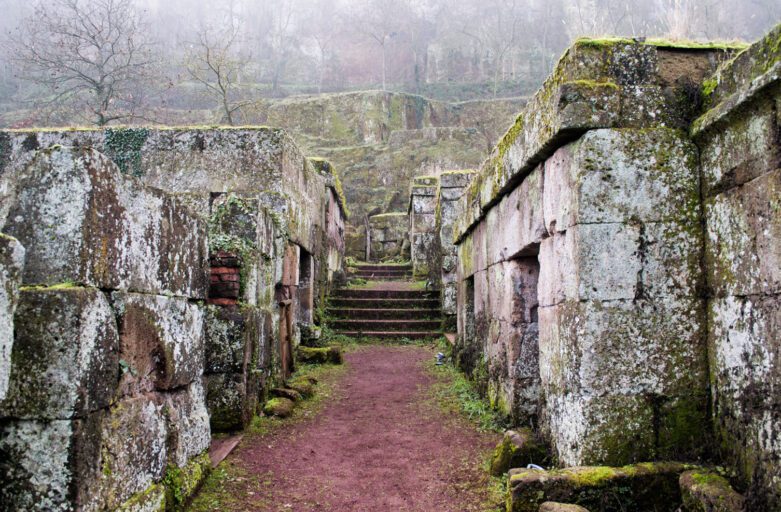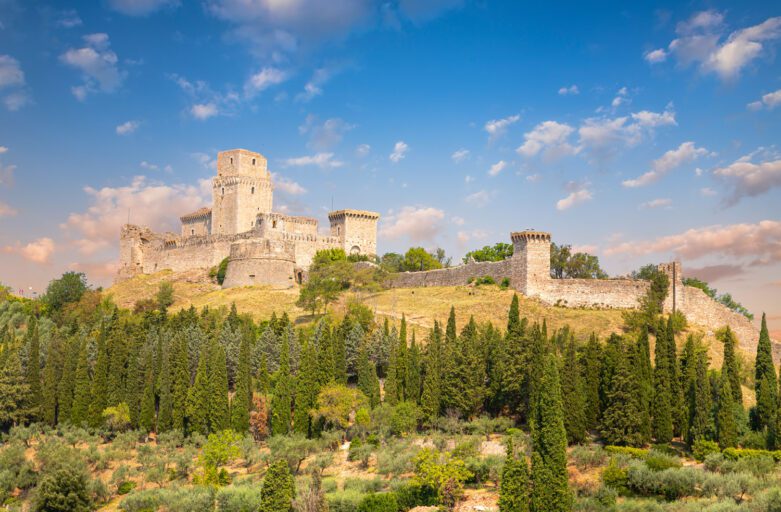Tag: History
Walking Tour Perugia
The Bridge of Towers
The Bridge of Towers as Was Seen by Goethe
In September 1786, the great German poet, J. W. Goethe (1749 – 1832), left for a journey to the discovery of Italy, that would last nearly two years. This adventure, overfilled with beauty, would later inspire his Italian Journey. In the pages of that report, a memory of Goethe’s visit to the Bridge of Towers (Ponte delle Torri) in Spoleto is also included. He recalls, “I ascended to Spoleto, and reached the aqueduct, that is also used as a bridge to connect two mountains. Its ten arches, that cross the valley, are built in stone; they have been there for centuries, and carry water to every part of the town. This is the third monument of Antiquity I see; and, one more majestic one. The architecture of those times is almost like a second Nature, in accordance with civic needs. . .”
The Springs of Clitunno, and the Little Temple
“Now everything is silent”: The Little Temple
In 1876 an Italian poet, Giosue Carducci, wrote a famous poem called Alle fonti del Clitunno, “At the Springs of Clitunno” (River). It dealt precisely with this site, that is now part of the UNESCO World Heritage List. Some lines from another poem are reported on Carducci’s monument in Perugia, in the city park (Giardini) named after him, where the Rocca Paolina had existed. Located in the territory of Campello, near Spoleto, the Springs of Clitunno River will bewitch your soul with the delights of its uncontaminated, silent Nature. Underground springs flow into a small lake with still, crystal clear waters, where swans, ducks, fish, frogs live. The surrounding vegetation is luxuriant, so that all kinds of trees mirror themselves in the transparent water of the lake, which thus acquires different nuances of green.
The Stronghold of Perugia Soldiers
The Rocca dei Perugini Nowadays
The powerful Rocca dei Perugini, “Fortress of Perugian (soldiers),” was built along the town walls near Porta Perugina, the town gate toward Perugia, in fact. This is whence, already in 1296, the road called Via Pievaiola started, that still nowadays connects Città della Pieve and Perugia.
The fortress, currently incorporated in the town center, faces Matteotti Square; and thanks to an intelligent restoration, has become a key factor for the development of tourism.
With reference to its structure, the stronghold is a noteworthy example of military architecture in Umbria. At the same time, its very presence makes an important chapter in the history book of the town, insofar as it reminds us of the time when it was controlled by Perugia. The village was then called Castel (castle) della Pieve; pieve meaning a country church.
Della Corgna Palace
Della Corgna Palace: The Historical Context Right in front of the Cathedral, one of the most beautiful lordly mansions in Città della Pieve rises, the
The Roman Theater in Gubbio
A Look at Our Ancestors
South of Gubbio’s Medieval quarters the Guastuglia Plain (pron. goo-ast-oo-Leah) lies, delimited west by the so-called vallum (military defense line), and east by a river called Camignano (pron. come-in-ya-know). From this area you can admire the Medieval town center, a little above, and the old buildings – the Palace of Consuls, first of all – that made the history of Gubbio.
Perugia Underground – The Archaeological Area
Time Machine
The Archaeological Area, at the very core of the so-called Saint Lawrence “Island”, will give you the joy of a discovery trip throughout the centuries. Quite unknown to the local people themselves, these places are hidden inside the hill on which Perugia is built. By entering them, it will become clear how, starting from the Etruscans and via the Romans, then the Papal residence, the town acquired its current shape. Going from the cloister of the cathedral down into the archaeological area can be likened to a time machine that synchronizes its clock with ours more and more as we cross the centuries toward the surface.
The Rocca Paolina – Perugia
The Intriguing Story of a Fortress
In Perugia’s old town center, at the southern end of Corso Vannucci (Main Street) there is an area with flowerbeds, benches, and fountains, where the Palace of Perugia’s Province and the equestrian monument to the first king of united Italy, Vittorio Emanuele II (1820-1878), also rise. This is where a group of buildings existed, called Rocca Paolina: a fortress built by decision of Pope Paul III in the mid-16th century.
The Palace of Priors
A Town Symbol
The Palace of Priors is undoubtedly one of the most important buildings in Perugia, beside being a masterpiece in Gothic style. Its structure develops partly along Main Street (Corso Vannucci) in the old town center, and has its acme in the façade facing the main square, Piazza IV Novembre.
The square, one of the most beautiful in Italy, is marked by the strong polar opposition between the civil side of the town, precisely the Palace of Priors, and the religious side, i.e. the buildings in the so-called Saint Lawrence “Island,” in a Medieval atmosphere enlivened by the water springing from the Great Fountain.
The Etruscan Arch, the Town Walls
Perugia and Its Etruscan Walls
Perugia was one of the main Etruscan towns. Its external walls, dating back to the third century BC (with some older, fourth century parts), still witness the importance the town had acquired. The whole perimeter is some three kilometers (1.5 miles) long; many sections remain visible, while others have been incorporated within later buildings. The Etruscan walls follow the ups and downs of the soil. In the lower areas they fold inwards, so that the overall shape recalls a clover
Moro’s Tower, Palace of the Seven, People’s Palace
The Tower
A Central Role in the Town
The Medieval tower is among the buildings that stand out in Orvieto’s skyline, together with the imposing Cathedral. The tower will remain conspicuous even if you walk in the town streets – it would be impossible not to note this building, some 50 meters (150 feet) high, which dominates all others not only because of its dimensions, but also because of its central role in the city planning. The tower is the very center, starting from which the four town quarters – Corsiva, Olmo, Serancia, Stella – are distinguished. With reference to this, its sides are oriented according to the cardinal points. Its position also makes it the Civil Tower. What does it mean? What makes it different from a belfry or a tower-house? Like all true civil towers, this has bells that marked the most important occasions in town life. Only in a later epoch did it begin to house a clock too.
The Well of Saint Patrick
Antonio da Sangallo, a Brilliant Engineer
On the edge of the Orvieto Cliff there is a small square in which only a cylindrical building exists, apparently quite anonymous. This structure, however, hides a “thing ingenious with fancy and wonderful with beauty” inside. This is how Giorgio Vasari (in the 1550 edition of his Lives of the Most Excellent Painters, Sculptors, and Architects) ends the description of this fascinating work of architecture and engineering: a well dug deep into the tuff.
Orvieto Underground
The Hollow below the Town
Orvieto lies on top of a huge rock of volcanic origin, made of tuff and pozzolana. Visitors cannot but be charmed by this plateau, called la Rupe (the Cliff), that rises and dominates the valley all around, with its woods and vines. Man did not only colonize this rocky habitat, and add all sorts of buildings, up to the cathedral and towers, but – in all epochs – also dig underground hollows. Tuff has been housing a town below the town for centuries. So, Orvieto can be also visited in the depths of its own ground, and can boast unique underground areas. Some 1,200 artificial underground hollows have been counted; they were dug from the Etruscan Era to the Renaissance, and still later on. Under the town streets, see tunnels and rooms of all kinds: culverts, wells, silos, columbaria (dovecotes), furnaces, Medieval dumps. So, a curious symbiosis can be sensed between the Orvieto people and the rock – human engineering talent, the needs of everyday life, and Nature here mix by making an alliance that still nowadays surprises us.
The Necropolis at “Crocifisso del Tufo”
When the Etruscans Founded Orvieto: From Sky down to Earth
A tour between earth and sky: this is how Orvieto can be visited and discovered because of both its geographic position (a town rising on top of a cliff, surrounded by a valley) and its history (from ancient Etruscans to nowadays). In Orvieto, in fact, tuff and human genius live indissolubly together since the era when the Etruscans founded it. But, who were the Etruscans? Even if their origin has still to be completely explained and many conjectures are made, they for sure were a people who existed in Central Italy between the ninth and the first centuries BC. Etruscans, basically, were skilled merchants in touch with the other civilizations of the Mediterranean Sea. The top expansion and power of their city-states took place between 800 and 600 BC, before they fell under Roman domination.Orvieto was among the last towns to be conquered by the Romans, namely when it was defeated in 264 BC.
The Albornoz Fortress in Orvieto
From Freedom to Being Dominated
During the Middle Ages, Orvieto enjoyed a long period of welfare and independence as a “free Commune” – its rulers being autonomous from the Emperor, both politically and economically – in spite of the intestine clashes between the parties of Guelphs (who supported the Pope’s authority) and Ghibellines (who supported the Emperor). During the whole 13th century the town was a rich one, and organized itself through the basic communal institutions insofar as it was perfectly in a position to rule itself, control its own territory, and thrive.
The Citadel of Assisi
A Stronghold to Guard Assisi
So sings the Hymn of the Sentinels (Scolte) of Assisi, the town’s hymn:
The trumpet blares, the days ends already,
already the curfew song soars.
C’mon, sentinels, up to the towers,
O armed guardians, hey there!
Heads up, keep silent, and watch!
Heads up, sentinels, and watch!
Town Hall Square
The Main Square in Assisi
Piazza del Comune (the town hall square) has always been the hub of social and cultural life in Assisi. Not by chance do all the main streets from the town gates meet here.
Built upon a Roman forum, in the Middle Ages it became the place for the people’s gatherings. Therefore, here rise the most important buildings of town life: the Temple of Minerva, also used as the oldest Town Hall in Assisi (later transferred to Palazzo dei Priori, the palace of Medieval “priors”); the palace of the Capitano del popolo (the “common people’s” – actually, the middle class’ – political spokesman), and the People’s Tower.








